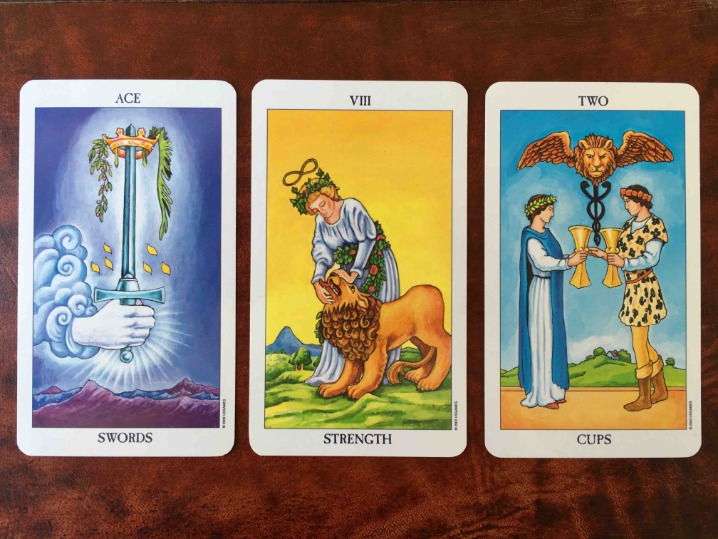Remember that Keen only offers Tarot readings via live chat and call, making video readings unavailable. But the upside is that you can get advice on the go, giving your greater convenience and flexibility. You’ll also benefit from connecting more discreetly for added privacy and flexibility.
Keeping a record of your readings can help you to better understand the cards and your own interpretations of them. It’s also a great way to track your progress and keep track of any patterns that may emerge over time. The tarot is a tool for gaining insight and guidance, but ultimately, the interpretation of the cards is up to you. Read more about Free Tarot Readings here. Trust your intuition and allow yourself to be guided by the symbolism and imagery of the cards. You can use any spread or layout that you feel drawn to, or you can make up your own. When pulling your cards, pay attention to your intuition, and choose the cards that catch your eye or feel right. You can use any method you feel comfortable with, such as the overhand shuffle, riffle shuffle, Hindu shuffle, or table shuffle.
Remember that tarot readings are a tool for self-reflection and personal growth, and that the cards can offer guidance and insight that you may not have been able to see on your own. While it is often possible to ask questions that can be answered with a simple yes or no during a tarot reading, the tarot oftentimes gives us rather complex answers. Getting a clear yes or no – often involves delving deep into the cards symbolism to understand the reasoning behind that yes or no. The cards are rather wordy conversationalists that love to explain and ponder possibilities.
The left side represents one person, while the right side represents the second person. The card between them reveals what keeps the pair together. Anastascio recommends this spread for anyone looking for an alternative (or perhaps a second opinion!) to the Celtic Cross. To set up this spread, pick seven cards and place them in a horseshoe. The first card is placed in the upper left-hand corner and the seventh in the top right-hand corner, and then fill in the figure. This spread is also pretty universal and can be applied to most situations, says Anastascio.
Hearing advice from professional readers can help guide your journey — because everyone has their own tips. As a professional astrologer and tarot reader, I find that taking notes in a journal of all the cards you’re pulling on a regular basis is helpful. My great grandmother, who read tarot during the Great Depression, taught me that if you are seeing similar cards over and over that they are trying to tell you a message. Keeping track of your tarot pulls can help you see the patterns and themes to pay attention to. While you can certainly visit a tarot practitioner for a reading, you can also learn to read your own tarot cards. That way, you can define your relationship with them and determine how they can fit into your life.
Money talks: How much does a tarot card reader make?
The card placements here represent the past, present, and future. Perhaps you’re curious about the status of your relationship with a special someone, or you’re wondering if you should follow your dream of becoming a fashion photographer. As Tea says, “The tarot is a tool for you to be proactive in your own life, and to move into your own destiny with confidence.”
How to Interpret Tarot Cards
First, a bit of history—Tarot got its start as a card game in the 15th century. So while it may seem like reading cards is an ancient practice, the use of Tarot for divination really came into its own in the 18th century. Because the Tarot deals in archetypes (or universal symbols), the meanings of each card and the stories those meanings tell span culture, continent, and time. If you’re a fan of astrology, the Zodiac Spread can be used to give insight into the bigger picture of life. It brings the tarot cards together with the horoscope’s 12 houses. Read more about angel messenger one card here. The purpose of a tarot spread is to reveal a storyline that gives guidance and answers a querent’s inquiry. The tarot cards were not originally used for any divination or occult purposes; rather, they were used for diversion and games.
Track your progress by keeping a tarot journal.
Mix the cards until you feel that they are well shuffled and your energy is infused in them. One way to transfer your energy to the deck is simply by handling the cards.
These suits reveal which spheres of influence are being activated, offering guidance on how to best manage any circumstances at hand. “An alternative to meditating on your daily draw is sleeping on it — literally! Sometimes I’ll place a card under the bed where my head rests. When I’m ready to drift off to sleep, I imagine myself descending into the image on the card and inviting its spirits and energies into my dream life. The images and experiences that come up in my dreams will often illuminate new ways of understanding the card that my waking mind may not have realized,” Hodges said. Many decks are in conversation with the images created by Pamela Colman Smith for the Rider Smith Waite tarot deck, which was created in 1909 and remains a popular option. Tarot reader Caitlin McGarry, who resides in Mallorca, recommends keeping your intention or question in mind while shuffling and choosing cards.
These early decks were used for playing card games and were similar to modern playing cards. Tarot is an immense part of my own personal journey towards self development. I’ve always felt compelled to share it with others through readings in my spare time.




